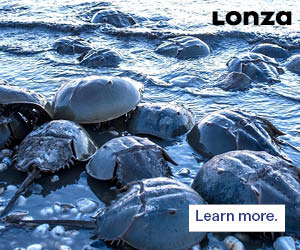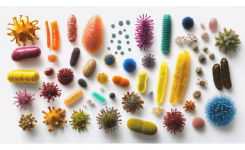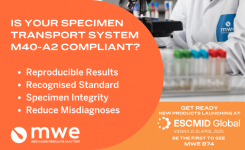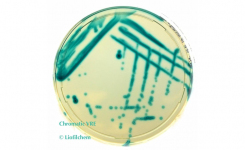Introduction
Mérieux NutriSciences has just released its 4th edition of its Blue Paper on “European food safety trends, key issues & perspectives”.
Establishing itself as an annual food safety reference book for food operators, this guide reviews the latest data on food safety – from the ‘usual suspects’ such as Salmonella and mineral oil hydrocarbons (MOH) to the latest emerging issues, such as microplastics.
This valuable document is of particular importance to food operators during the current COVID-19 pandemic, as they will now have to reassess their organization, to ensure it is resilient and a safe environment for its personnel.
Etienne Casal, Senior Vice-president Europe at Mérieux NutriSciences discusses with rapidmicrobiology the findings in this 2020 edition and their effect on key topics.
Q. What are the key findings from the 2019 data that are covered in this Blue paper edition?
E. Casal: Every year, with our experts, we take time to do a deep analysis of food safety alerts and product recalls. The general outcome of these analyses from the European RASFF system (Rapid Alert System for Food and Feed) are provided in our Blue Paper 2020 and summarized hereafter (See infographic below).
On a global scale, the willingness of industry to constantly improve quality of its products, combined with enhanced regulatory requirements, has led to a decrease of 4% in notified events in 2019 (vs 2018).
However, some topics remain of significant concern, of which include:
- the increase of product recalls due to undeclared allergens (up 12% in Europe), which remains the number one reason in Europe for product recalls.
- the increase of chemical contaminant issues in the US, that have led to product recalls.

Ensuring food safety and quality is a daily task for food manufacturers. We are committed in sharing with them expert knowledge in order to help them face challenges of today and tomorrow. The Blue Paper is a great example of our commitment.
Q. What is your editorial line? How do you pick the topics?
E. Casal: Our ongoing monitoring work with experts determines that year’s topics. We take into account: official reports, trends provided by our Safety HUD solution, analyses from previous editions of the Blue Paper, public opinions and of course company feedback.
All this information is then classified into the following categories: ‘Emerged or Monitored topics’ and ‘Emerging topics’.
This approach allows us to be proactive and to anticipate emerging risks. Therefore, we can provide companies with the most relevant content for a comprehensive and efficient risk assessment.
It is also a great way to reassess topics addressed in previous editions, sometimes considered as known risks but can “re-emerge” with new challenges.
Q. How has the format evolved in this new edition?
E. Casal: Every year, we try to improve the experience of our readers by considering their feedback on the content and the layout. For instance, for this fourth edition, we added some highlights on food fraud, which is a growing concern at international level, sometimes with associated health risks.
In addition, our wish to provide the most accurate and real-time data led us to use Safety HUD, the Mérieux NutriSciences developed solution. This is an online platform dedicated to the monitoring of food safety and fraud alerts at an international level.
Last but not least, in our commitment to protect consumers’ health, we collaborated with our sister-company Biomérieux and carried out a worldwide survey to determine how food safety is perceived. The results of this survey have been implemented in the chapter dedicated to consumers’ perspectives.
Q. What new topics have been introduced in Blue Paper 2020?
E. Casal: A focus on four new food safety topics has been added to the contents of the Blue Paper, which include:
- Chlorate and Perchlorate
- Mineral Oil Hydrocarbons (MOH)
- Parasites
- Food supplements
The cross-sectional analysis of how it enters the food chain, whether by food matrices or food safety negligence, is essential if you want a comprehensive understanding of potential risks and be able to perform a proper risk assessment.
Q. What do you see as future trends in food safety? Which topics are candidates for next edition(s)?
E. Casal I can say with certainty that some topics which have recently emerged like NIAS (non-intentionally added substances), microplastics, nanoparticles, and viruses, will continue to drive a lot of discussion. And so will pathogen management; with more focus on environmental monitoring during production.
I would also add, marine biotoxins, dioxins and PCBs (polychlorinated biphenyls), as well as new food categories (honey and fats and oils) to be good candidates for integration into future editions of the Blue Paper.
The challenges that arise in food safety and our understanding of them , along with what our scientific, technical and regulatory experts feel important to discuss, will guide us in our final editorial choice.
Of course, we will have to take what we learnt from the global COVID-19 sanitary crisis and use it to consider the short- and long-term consequences for food operators.
Q. Was there any notable trends in food safety in the first half of 2020, due to COVID-19 and lockdown situation?
E. Casal: It’s too early to look back for trends or specific events. Certainly we’ve seen examples of recalls during the lockdown– demonstrating the robustness of food industry quality systems and controls.
Currently, we have no evidence to suggest the SARS-CoV-2 virus could create any foodborne illness and we are not aware of any case so far either.
So, there is no reason to believe there will be significant changes in food safety trends due to food and raw materials themselves.
However, logistics, supply chain and market access all had problems which levergaes the need for new sourcing, new routes and new distribution channels e.g. e-commerce; which could impact food safety trends and food fraud risk. And is something we will definitively analyze in the coming months.
Click here to order the full version of the Blue Paper 2020 or request an extract for free.
Mérieux NutriSciences welcomes any comments and suggestions, that will be taken into account for the future of this reference book.
If you need further information please use the ‘Request Information’ button provided below.

About Etienne Casal - Senior Vice-President & Head of Europe at Mérieux NutriSciences. Since 2014, Etienne Casal has been head of the European region for Mérieux NutriSciences. He is also a member of the Group Executive Committee and the President of Biofortis, a Mérieux NutriSciences contract research organization specialized in the fields of health and nutrition.He has previously experienced numerous strategic, business and managerial roles in international context. Etienne Casal was notably Vice-president & Global Head of Certification Business Line at Bureau Veritas.All in all, he has been involved in strategic management for 20 years and developed a strong knowledge of safety and quality sectors since he graduated with engineering degrees of both Ecole Polytechnique and Telecom Paris.



















